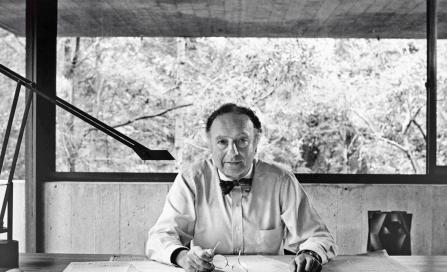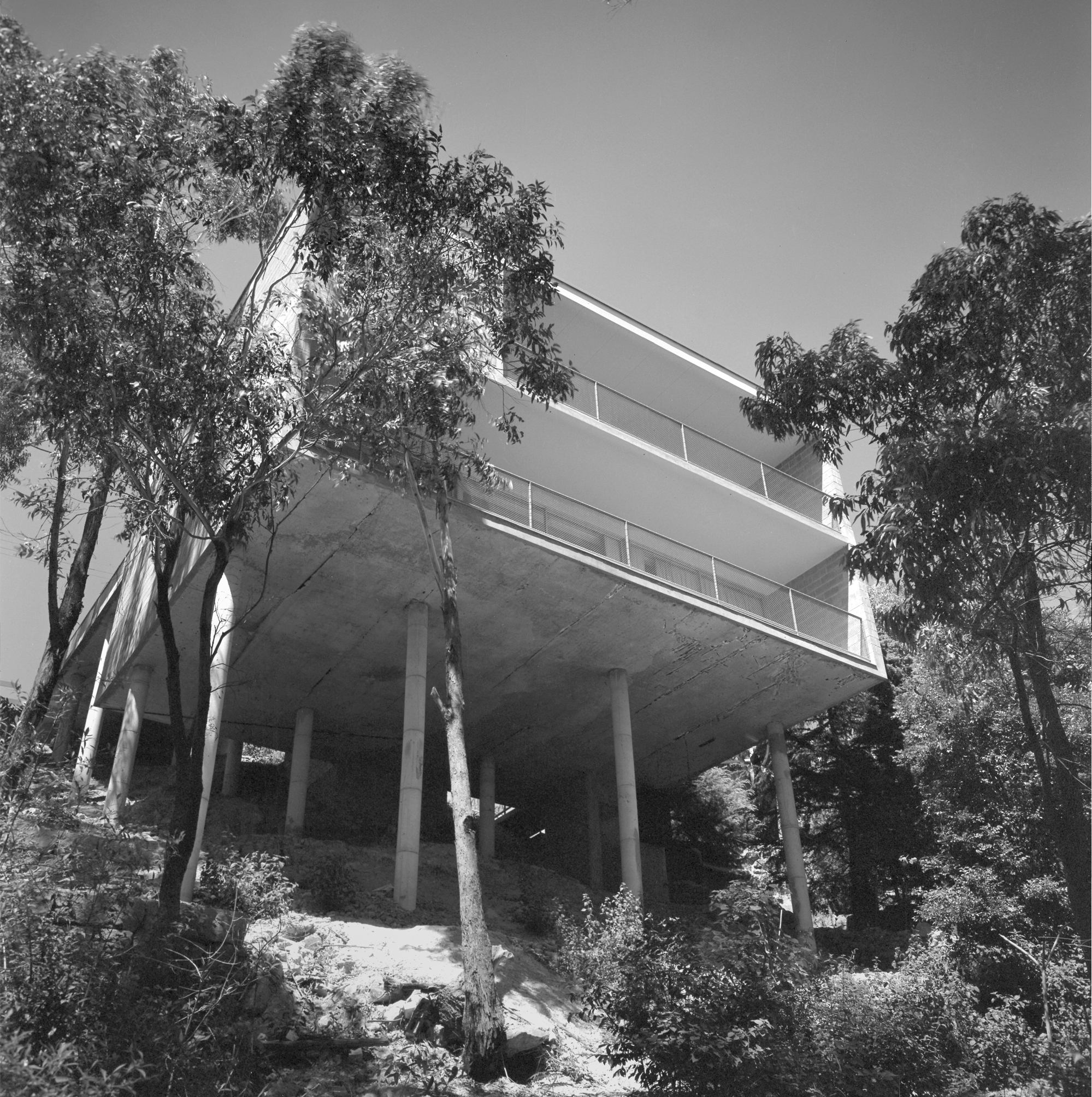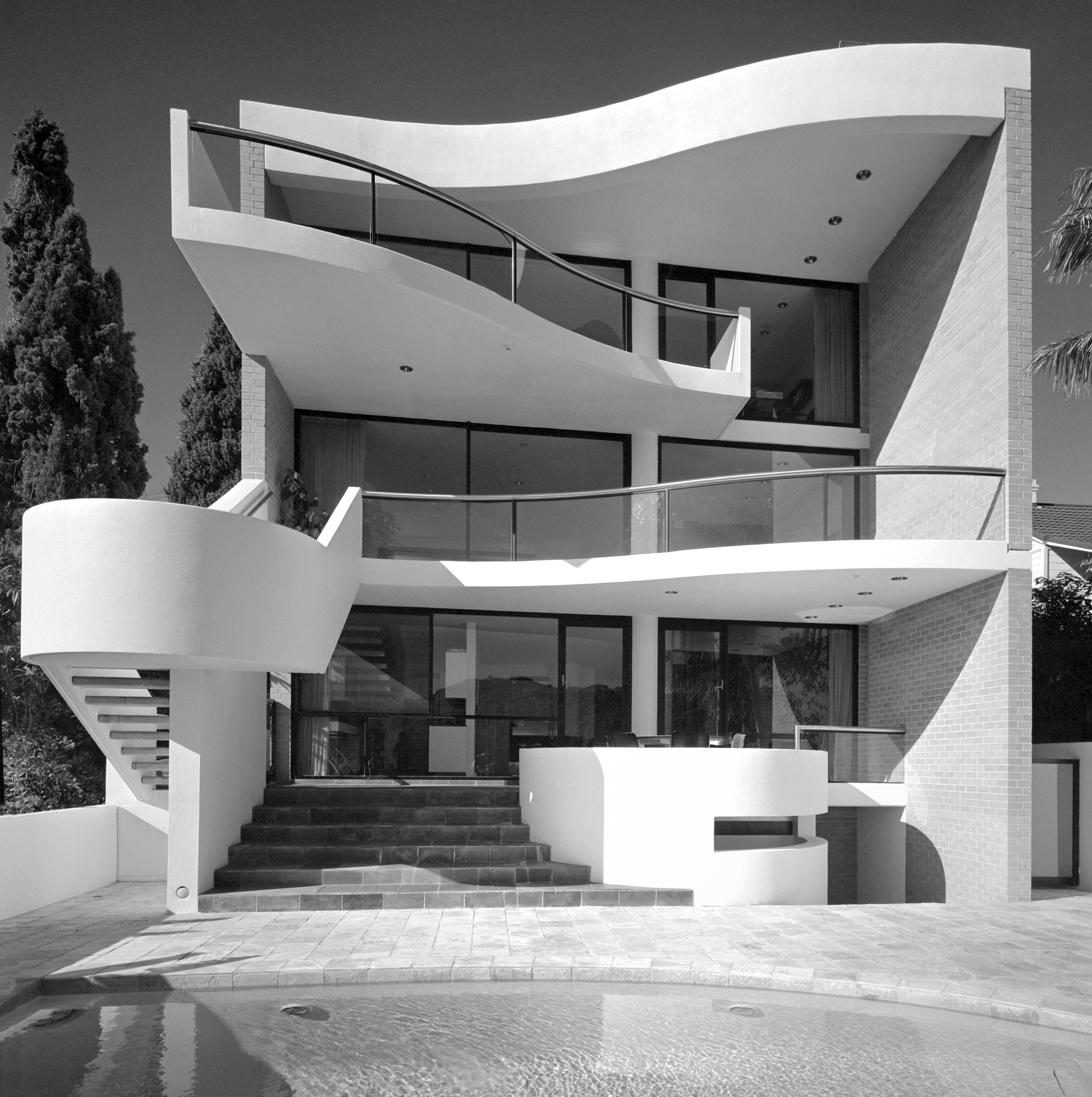|
Harry SeidlerHarry Seidler was one of the most influential Australian architects of the post-war period.He made the case for Modernism in this country through his prolific commissions, his writing and lectures. Seidler was born in Vienna in 1923, the son of Rose and Max Seidler. The family's clothing factory was prosperous, even during the hard years of the early 1930s. The Seidlers could afford holidays and Rose was able to pursue her interest in contemporary design by commissioning architect Fritz Reichl to decorate their Vienna apartment and design the furnishings. Harry's similar interests were apparent from an early age as he recalled looking at Riechl's designs on 'tracing paper' with interest. Life changed dramatically with the German occupation of Austria in 1938. The family company was confiscated by the Nazis and Harry left for Cambridge (UK) as a refugee to escape increasingly violent anti-Semitism. His parents arrived in London in 1939. War broke out between Britain and Germany that year but, having apparently found sanctuary, Harry was classified as an 'enemy alien' in 1940. He was subsequently deported to Canada and was released on conditional parole with one of those conditions being acceptance into a Canadian university. Harry's enrolment to study architecture at the University of Manitoba, was, therefore, both a means to pursue an abiding interest and a way to escape internment. Though the University had a traditional architecture department, it was here that Seidler was first exposed to Modernist architecture. He secured post-graduate study under the architects Walter Gropius and Marcel Breuer at Harvard University, graduating in 1946. He studied visual aesthetics with Josef Albers at Black Mountain College, North Carolina, before working with Breuer in New York. In 1948 Seidler visited Brazil to see the work of master planner and Modernist Oscar Niemeyer. In the meantime Rose and Max Seidler had emigrated to Australia. Their son had hoped they would choose North America where he was based but, in 1948, Rose commissioned Harry to design her a house. That project brought Harry to Australia and resulted in the dwelling now called the 'Rose Seidler House'. Inspired by the work of Breuer and Albers, it was revolutionary in a city that had embraced some forms of Modernism but was yet to experience such apparent simplicity and open design. That it won the Sir John Sulman Medal for architecture in 1951 suggests that there was a latent receptiveness to Modern architecture. Seidler was not the first architect to practice Modernism in Australia but he brought to this country a unique first hand experience of developments overseas, and work with the world's foremost architects. Seidler received so many commissions after completing his parents' house he decided to stay on. He warmed to the city that initially seemed provincial and suburban and set about championing Modern architecture and the residential redevelopment of Sydney Harbour, a waterway he thought glorious but under-appreciated and defiled by the amount of industry around its foreshore. The 'Basser House', completed in Cowdroy Avenue, Cammeray, in 1959, demonstrated perfectly Seidler's capacity to use form to meet the challenges presented by the harbour's sometimes precipitous foreshore. On a steep sloping block overlooking Middle Harbour, a site 'generally considered unsuitable for building', the architect designed a rectangular structure on stilts: 'a house that is almost in mid-air' in the words of one commentator. (Sydney Morning Herald, 10 September 1959) The Blues Point Scheme, that gave rise to 'Blues Point Tower', reflected Seidler's belief in the need to remake a residential waterway with master planned 'vertical zoning' (Sydney Morning Herald, 23 February 1960). Indeed, Harry Seidler was among the first in Australia to argue for urban consolidation and high rise living, in opposition to the suburban ideal that had dominated planning and architectural thinking since the beginning of the 20th century. As one who always strove for a 'rational' city environment, he also came to question the benefits of some examples of heritage preservation proposed in the context of the quickening pace of change from the 1970s. Seidler was particularly critical to the retention of facades in the absence of the structure behind, a practice he called 'facadism'. By 1970, when the firm operated from premises in Ridge Street, North Sydney, Harry Seidler and Associates was one the city's leading architectural companies. In 1973, the firm moved to offices of Seidler's own design in Milsons Point. His most notable North Sydney domestic commission after this was the highly-regarded 'Hannes House', built overlooking Middle Harbour at Cammeray in 1984 - not far from the 'Basser House' he designed 25 years earlier. The 'Hannes House' gave early expression to what was becoming Seidler's signature use of white curvilinear concrete form. It signalled a shift from the angular design of the 'Rose Seidler House' and the 'Basser House' and exemplified Modernism's receptiveness to new technology; in this case pre-stressed concrete. The most apparent example of the form in Sydney is Seidler's soaring 'Horizon Apartments' at Darlinghurst, completed in 1998. The use of curves had already been employed in addition to the architect's own office building and penthouses in Glen Street, Milsons Point; first in 1988 and again in 1994. Harry Seidler died in 2006. During a career of almost 60 years in Australia he received numerous architectural awards and prizes including another four Sulman Medals and four Wilkinson Awards. For his services to architecture he was made an Officer of the Order of the British Empire (OBE) in 1972 and a Companion of the Order of Australia (AC) in 1987. Harry Seidler was awarded the Royal Gold Medal by the Royal Institute of British Architects in 1996. |
|










